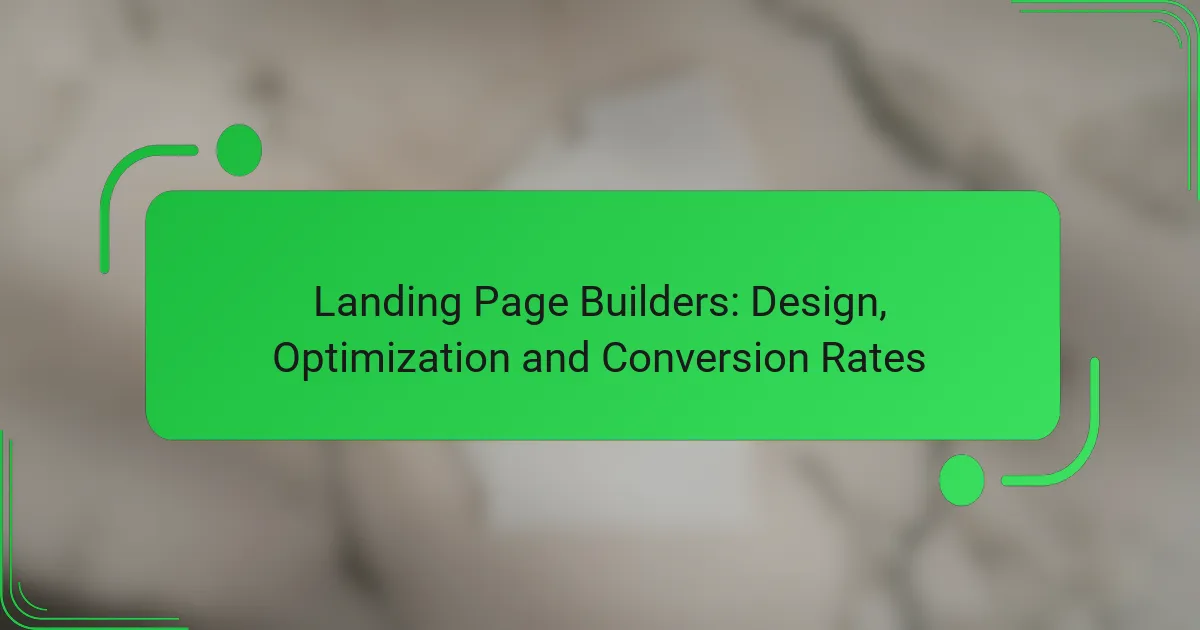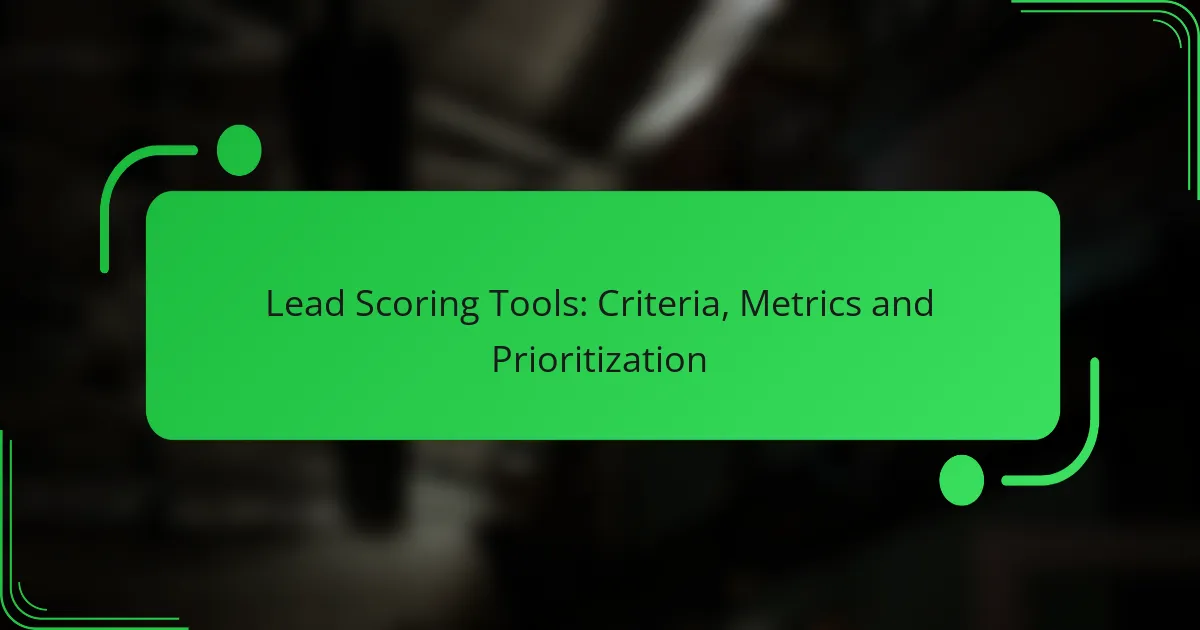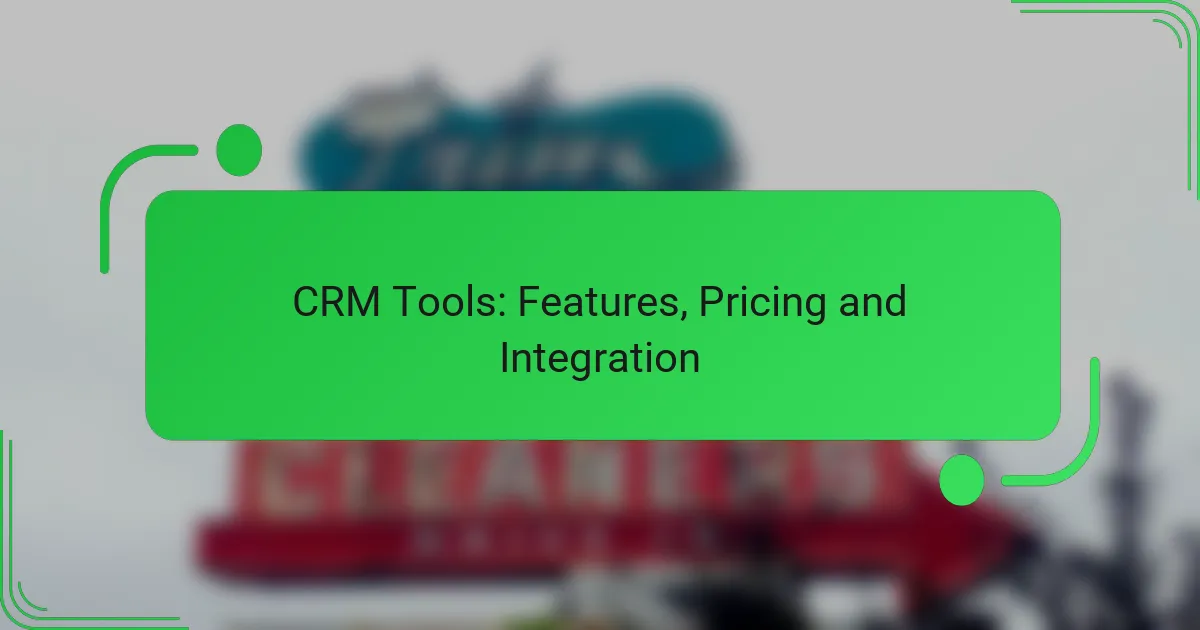Landing page builders are essential tools for creating effective online marketing strategies, allowing users to design pages that drive conversions. By focusing on ease of use, customization, and integration, you can select a builder that aligns with your goals. Implementing best practices in design and optimization will enhance user experience and significantly improve conversion rates.

How to choose the best landing page builder?
To choose the best landing page builder, focus on your specific needs, such as ease of use, customization options, and integration capabilities. Consider how well the builder aligns with your marketing goals and the features that can enhance your conversion rates.
Key features to consider
When evaluating landing page builders, prioritize features like drag-and-drop editing, mobile responsiveness, and A/B testing capabilities. These elements allow for quick design adjustments and help optimize your pages for better performance.
Additionally, look for integration options with email marketing tools and analytics platforms. This ensures you can track user behavior and adjust your strategies based on real data.
Top landing page builders
Some of the leading landing page builders include Unbounce, Leadpages, and Instapage. Unbounce is known for its advanced A/B testing features, while Leadpages offers a user-friendly interface suitable for beginners.
Instapage stands out with its extensive template library and collaboration tools, making it ideal for teams. Each of these platforms has unique strengths, so consider your specific requirements when selecting one.
Pricing comparison
Pricing for landing page builders can vary significantly. Unbounce typically starts around $80 per month, while Leadpages offers plans from about $37 per month. Instapage is generally more premium, with pricing often exceeding $100 per month.
Many builders offer free trials or tiered pricing based on features, so take advantage of these options to test functionality before committing. Always review what each plan includes to ensure it meets your needs without overspending.

What are the best practices for landing page design?
Best practices for landing page design focus on creating a clear, engaging, and user-friendly experience that drives conversions. Key elements include visual hierarchy, effective calls to action, and optimized content that resonates with the target audience.
Visual hierarchy principles
Visual hierarchy refers to the arrangement of elements on a landing page to guide users’ attention and improve readability. Use size, color, and placement to emphasize important information, such as headlines and key messages. For instance, larger fonts and contrasting colors can draw attention to your main offer.
Consider the flow of information; users typically scan pages in an F-pattern. Place critical content along this path to ensure it captures attention. Use white space effectively to separate sections and prevent overwhelming visitors with too much information at once.
Effective call-to-action strategies
An effective call to action (CTA) is crucial for guiding users toward desired actions, such as signing up or making a purchase. Use clear, action-oriented language that conveys urgency, such as “Get Started Now” or “Claim Your Free Trial.” Position CTAs prominently on the page to enhance visibility.
Experiment with different colors and button styles to find what resonates best with your audience. A/B testing can help determine which variations lead to higher conversion rates. Additionally, limit the number of CTAs on a page to avoid confusion; focus on one primary action to streamline user decisions.
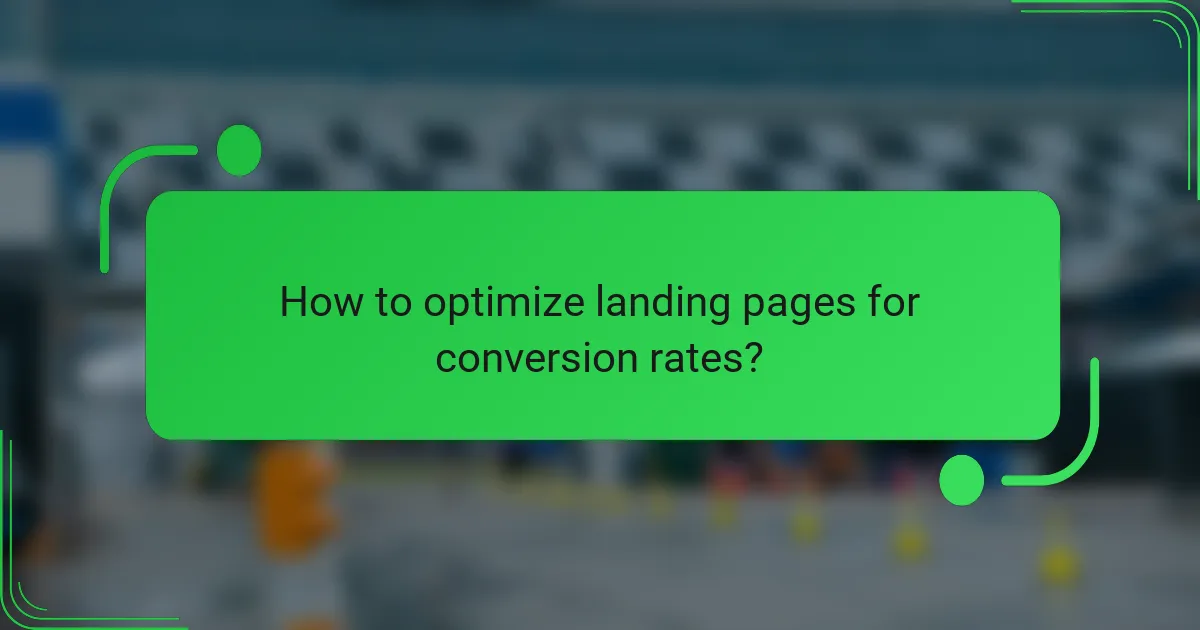
How to optimize landing pages for conversion rates?
To optimize landing pages for conversion rates, focus on clear messaging, user-friendly design, and effective calls to action. Implementing strategies like A/B testing, ensuring fast load times, and optimizing for mobile devices can significantly enhance user engagement and conversion outcomes.
A/B testing techniques
A/B testing involves comparing two versions of a landing page to determine which one performs better in terms of conversions. Create variations by changing elements such as headlines, images, or call-to-action buttons, and direct traffic to both versions to analyze user behavior.
For effective A/B testing, ensure you have a sufficient sample size and run tests for a reasonable duration to account for fluctuations in user behavior. Aim for a minimum of a few hundred visitors per variant to achieve statistically significant results.
Importance of page load speed
Page load speed is crucial for retaining visitors and improving conversion rates. Studies suggest that even a one-second delay can lead to a significant drop in user satisfaction and engagement. Aim for a load time of under three seconds to minimize bounce rates.
To enhance load speed, optimize images, leverage browser caching, and minimize HTTP requests. Tools like Google PageSpeed Insights can help identify specific areas for improvement.
Mobile optimization strategies
With a growing number of users accessing websites via mobile devices, optimizing landing pages for mobile is essential. Ensure that your design is responsive, meaning it adjusts seamlessly to different screen sizes, and that buttons and links are easily tappable.
Consider using larger fonts and simplified navigation to enhance usability on mobile. Regularly test your landing pages on various devices to ensure a consistent and effective user experience across platforms.
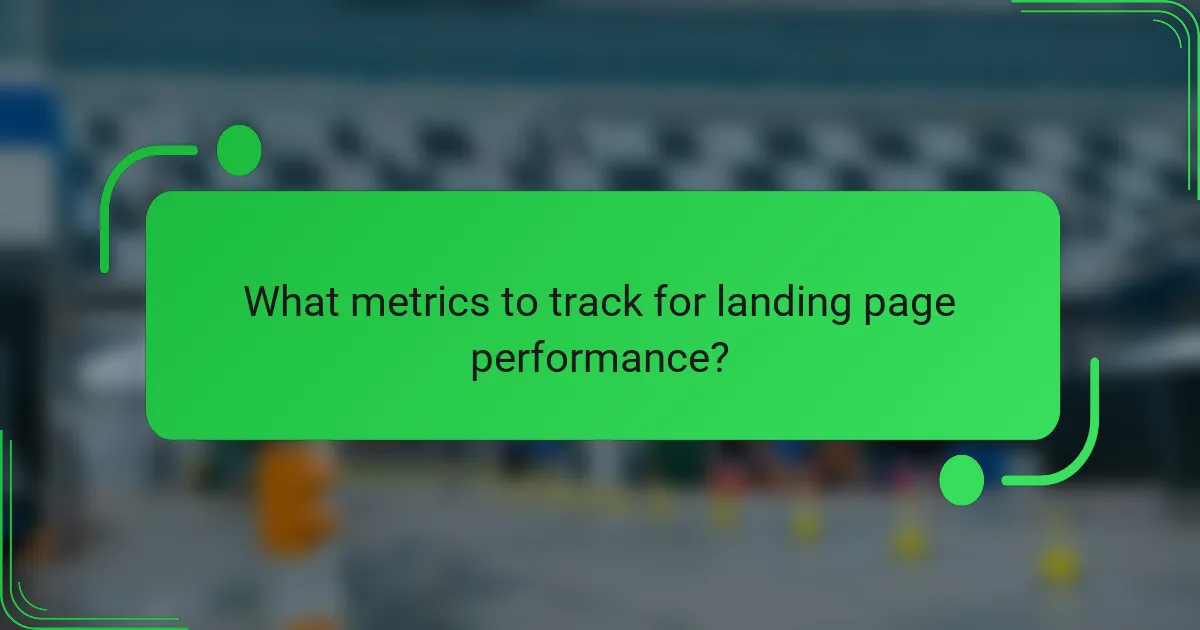
What metrics to track for landing page performance?
To effectively measure landing page performance, focus on key metrics such as conversion rate, bounce rate, and average time on page. These indicators provide insights into user engagement and the effectiveness of your design and content in driving desired actions.
Key performance indicators
Key performance indicators (KPIs) for landing pages include conversion rate, which measures the percentage of visitors who complete a desired action, such as signing up or making a purchase. A good conversion rate typically ranges from 2% to 5%, but this can vary based on industry and target audience.
Another important KPI is the bounce rate, which indicates the percentage of visitors who leave the page without interacting. A bounce rate below 40% is generally considered healthy, suggesting that users find the content relevant and engaging. Average time on page is also crucial, as longer durations often correlate with higher engagement levels.
Tools for tracking metrics
To track landing page metrics effectively, consider using tools like Google Analytics, which provides comprehensive insights into user behavior, traffic sources, and conversion tracking. Setting up goals in Google Analytics allows you to measure specific actions taken on your landing page.
Other useful tools include heatmap software like Hotjar or Crazy Egg, which visually represent user interactions on your page. These tools can help identify areas for improvement by showing where users click, scroll, and spend the most time. Regularly reviewing these metrics will enable you to optimize your landing page for better performance and higher conversion rates.
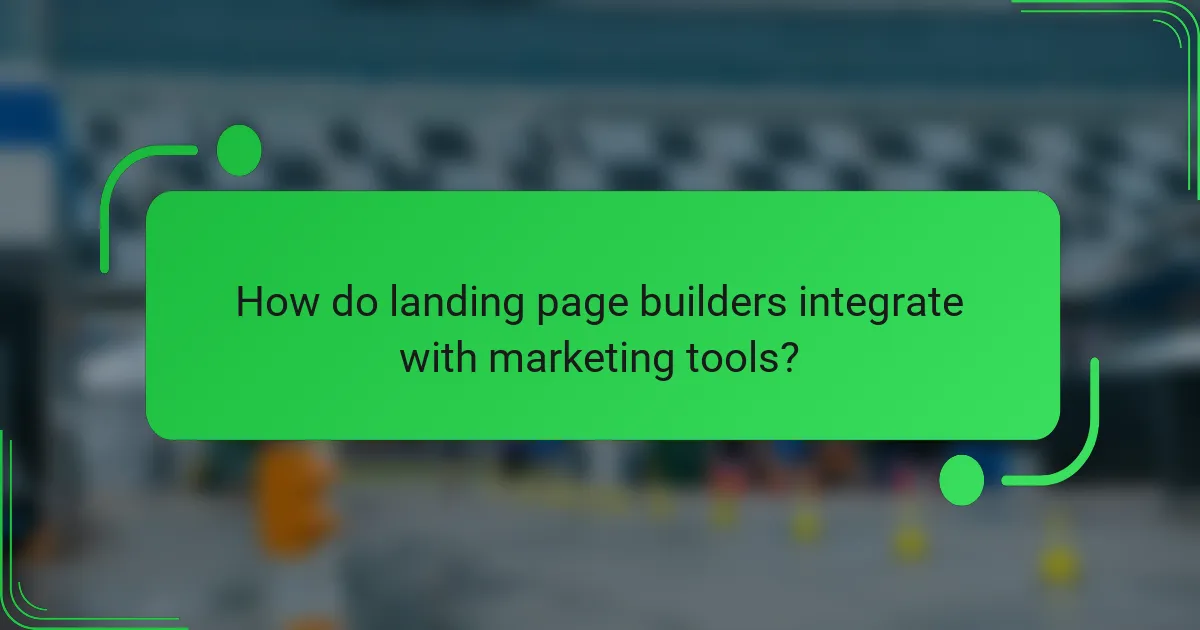
How do landing page builders integrate with marketing tools?
Landing page builders integrate with marketing tools by connecting various applications to streamline data flow and enhance campaign effectiveness. These integrations allow users to synchronize leads, track performance metrics, and automate marketing tasks, ultimately improving conversion rates.
Popular integrations
Common integrations for landing page builders include email marketing platforms like Mailchimp and Constant Contact, CRM systems such as Salesforce and HubSpot, and analytics tools like Google Analytics. These connections enable seamless data transfer and provide insights into user behavior and campaign performance.
Additionally, many builders support integrations with social media platforms, payment gateways, and webinar software, allowing businesses to create cohesive marketing ecosystems. This flexibility helps marketers tailor their strategies based on real-time data.
Benefits of integration
Integrating landing page builders with marketing tools offers several advantages, including improved efficiency and enhanced data accuracy. By automating lead capture and nurturing processes, businesses can save time and reduce the risk of human error.
Moreover, these integrations facilitate better tracking of user interactions, allowing marketers to analyze performance metrics and optimize campaigns accordingly. This data-driven approach can lead to higher conversion rates and more effective marketing strategies.
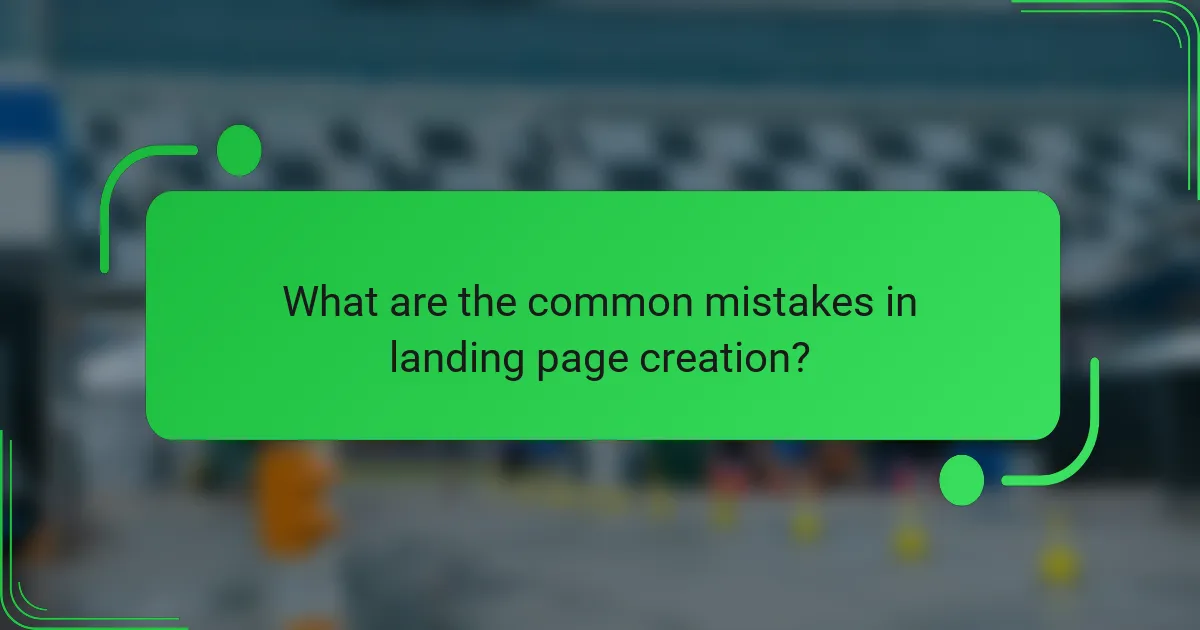
What are the common mistakes in landing page creation?
Common mistakes in landing page creation include poor user experience and neglecting SEO. These errors can significantly hinder conversion rates and overall effectiveness, making it crucial to address them early in the design process.
Poor user experience
A poor user experience can lead to high bounce rates and low conversions. Key factors include slow loading times, confusing navigation, and unappealing design. Aim for a loading time under three seconds and ensure that your layout is intuitive.
To enhance user experience, prioritize mobile responsiveness, as a significant portion of traffic comes from mobile devices. Use clear calls to action (CTAs) and ensure that forms are simple and quick to fill out.
Common pitfalls include overcrowded pages and excessive pop-ups. Keep your design clean and focus on one primary action you want users to take.
Neglecting SEO
Neglecting SEO can severely limit your landing page’s visibility in search engines. Without proper keyword optimization, your page may not rank well, reducing organic traffic. Incorporate relevant keywords naturally into your content, headings, and meta descriptions.
Additionally, ensure that your landing page has a clear structure with appropriate header tags and alt text for images. This not only helps with SEO but also improves accessibility for users.
Regularly update your content to keep it fresh and relevant, as search engines favor updated information. Monitor your performance using tools like Google Analytics to identify areas for improvement.
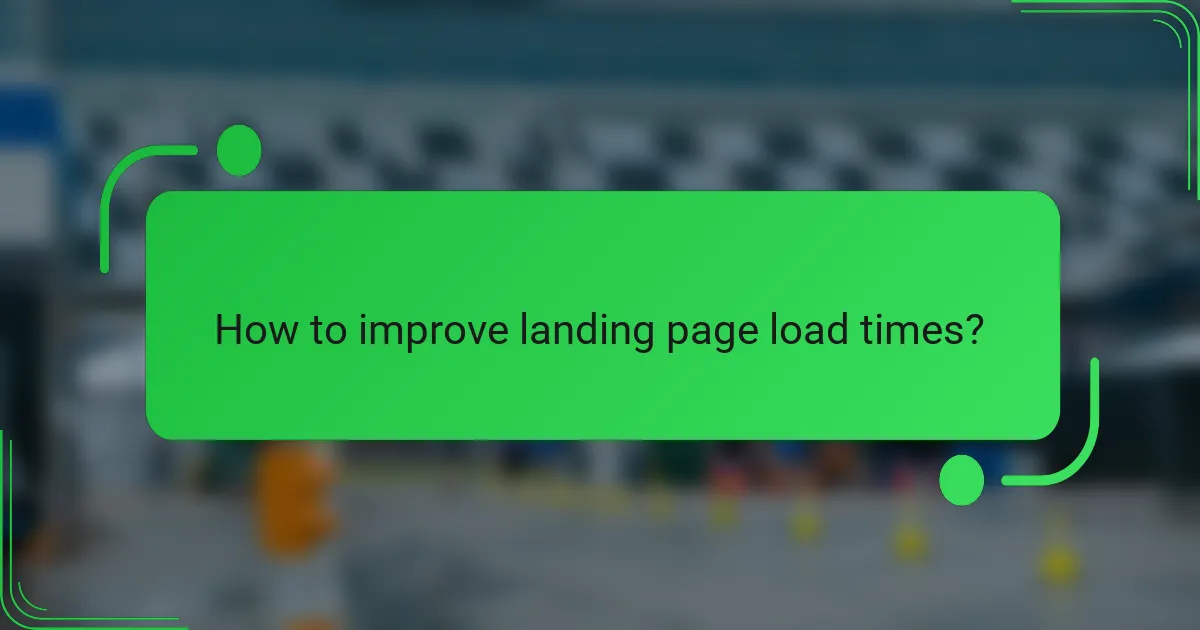
How to improve landing page load times?
Improving landing page load times is crucial for enhancing user experience and boosting conversion rates. Key strategies include optimizing images, minifying CSS and JavaScript, and leveraging browser caching.
Image optimization techniques
Image optimization involves reducing file sizes without sacrificing quality, which can significantly speed up load times. Common techniques include using formats like WebP or JPEG for photos and PNG for graphics, as well as adjusting dimensions to fit the display size.
Consider using tools like TinyPNG or ImageOptim to compress images effectively. Aim for a balance where images remain visually appealing while reducing their size to the low tens of kilobytes whenever possible.
Minifying CSS and JavaScript
Minifying CSS and JavaScript means removing unnecessary characters, such as whitespace and comments, to decrease file sizes. This process can lead to faster loading times, especially for pages with extensive styling or scripting.
Utilize tools like UglifyJS for JavaScript and CSSNano for CSS to automate minification. Regularly review your code to ensure that only essential scripts are loaded, potentially reducing load times by tens of percent.
